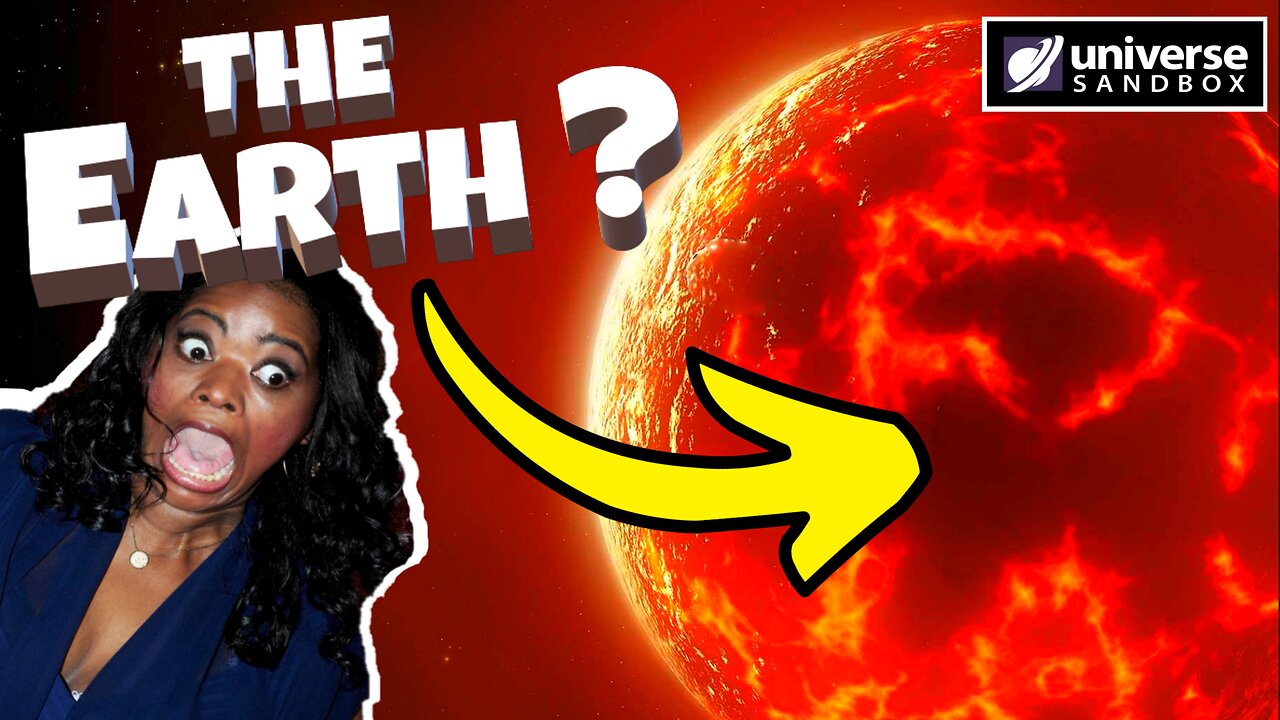Premium Only Content

UNIVERSE SANDBOX - Can The EARTH & SOLAR SYSTEM Survive A Dying SUN 5 Billion Years From Now?
What Happens to the Sun, Earth, and Solar System 5 Billion Years from Now?
1. The Fate of the Sun
In approximately 5 billion years, the Sun will exhaust its hydrogen fuel in its core. As this process unfolds, the core will begin to contract under gravity, leading to an increase in temperature. This rise in temperature will initiate helium fusion, where helium atoms fuse into heavier elements such as carbon and oxygen. Concurrently, the outer layers of the Sun will expand significantly due to increased energy output from these nuclear reactions. This phase is known as the red giant phase.
During this red giant phase, which is expected to occur around 6 billion years from now, the Sun will swell dramatically—potentially engulfing the inner planets of our solar system, including Mercury and Venus. The fate of Earth is less certain; it may either be consumed by the expanding Sun or pushed into a wider orbit due to changes in gravitational dynamics.
2. The Fate of Earth
As the Sun expands into a red giant, Earth will face extreme conditions. If Earth remains intact during this expansion, it will experience intense heat and radiation from the bloated star. The temperatures on Earth would rise significantly, likely leading to a complete loss of its atmosphere and oceans—rendering it uninhabitable.
Recent modeling suggests that even if Earth does not get swallowed by the Sun, it would still be subjected to conditions that make life as we know it impossible. The intense radiation and heat would sterilize any remaining life forms long before they could adapt or migrate.
3. Changes in the Solar System
The transformation of the Sun into a red giant will also affect other bodies within our solar system. As the Sun loses mass during this phase—approximately half its current mass—the gravitational pull on surrounding planets will weaken. This change could cause outer planets like Jupiter and Saturn to drift outward in their orbits.
Additionally, as planets move further away from an increasingly unstable star, their orbital dynamics may become chaotic. For example, Neptune’s orbit could extend significantly beyond its current position.
After exhausting its nuclear fuel and shedding its outer layers through violent episodes known as planetary nebulae, what remains of our Sun will eventually collapse into a white dwarf—a dense stellar remnant that can persist for billions of years but lacks sufficient energy output to support life.
4. Conclusion: The Cosmic Future
Ultimately, both Earth and our solar system face a dramatic transformation over billions of years due to stellar evolution processes governing stars like our Sun. While some celestial bodies may survive these changes—like certain outer planets—the conditions necessary for life as we know it on Earth are unlikely to persist.
SOCIALS:
YouTube - https://www.youtube.com/@TheBetterNASAProject
Rumble - https://rumble.com/user/WhatsNextVids
X - https://x.com/WhatsNe75388303
SUPPORT:
Patreon - https://www.patreon.com/user?u=37594401
Buy Me A Coffee - https://buymeacoffee.com/whatsnext
Cash App - https://cash.app/$YTpayments
-
 LIVE
LIVE
GritsGG
1 day ago36 Hour Stream! Most Wins 3420+ 🧠
3,333 watching -
 1:26:16
1:26:16
Michael Franzese
16 hours agoMenendez Brothers Denied Parole – Newsom Holds Their Fate
87.6K67 -
 LIVE
LIVE
JdaDelete
14 hours agoBurning Rangers & Stellar-Fire | Sega Saturday
128 watching -
 2:36:02
2:36:02
I_Came_With_Fire_Podcast
14 hours agoSecret Origins of Transhumanism & The New Atlantis
17.3K12 -
 LIVE
LIVE
sophiesnazz
1 hour agoLETS TALK ABOUT BO7 !socials !specs
44 watching -
 LIVE
LIVE
MadHouseRetro
1 hour agoPUFFCO PIVIOT BUNDLE GIVEAWAY! and Spider-man 2 playthough!
38 watching -
 1:12:40
1:12:40
Wendy Bell Radio
11 hours agoPet Talk With The Pet Doc
48K30 -
 LIVE
LIVE
Biscotti-B23
24 minutes ago🔴 LIVE TOURNAMENT PRACTICE ⚔ TOP 100 RANK 👑 DEMON SLAYER HINOKAMI CHRONICLES 2
15 watching -
 LIVE
LIVE
FusedAegisTV
15 hours agoStreet Fighter 6 FINALS, CS2 Semifinals | $1,250,000 | Riyadh, Saudi Arabia EWC 2025 !estv
134 watching -
 40:42
40:42
SouthernbelleReacts
1 day ago $0.08 earned😂 American Pie (1999) Reaction | Iconic Teen Comedy, High School Chaos & 90s Nostalgia 🥧
28.7K4